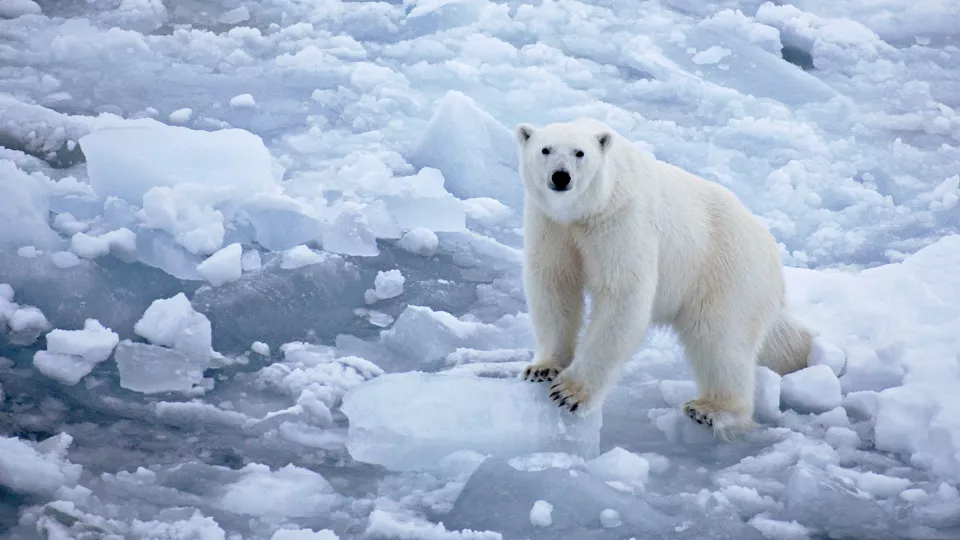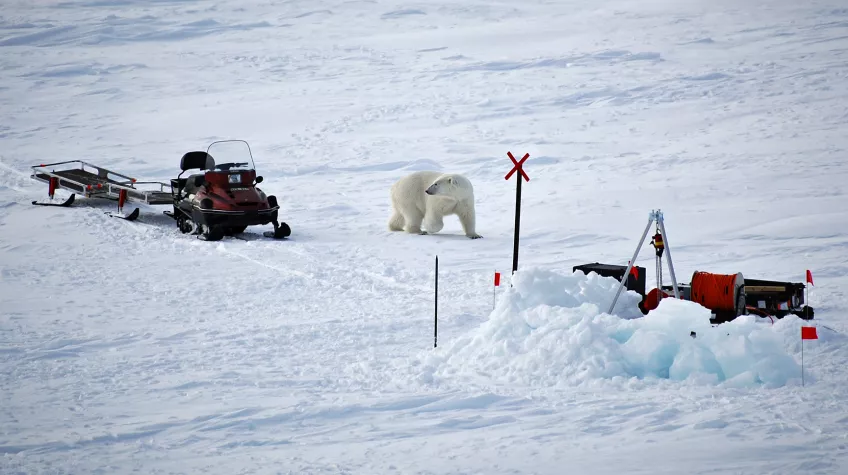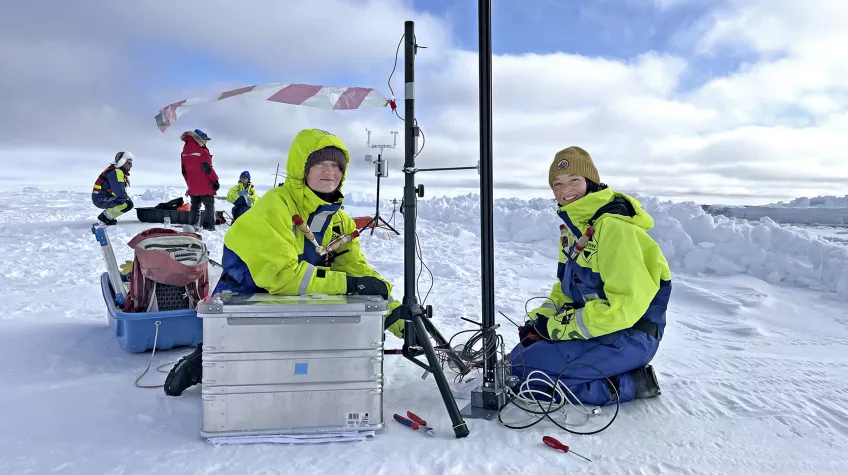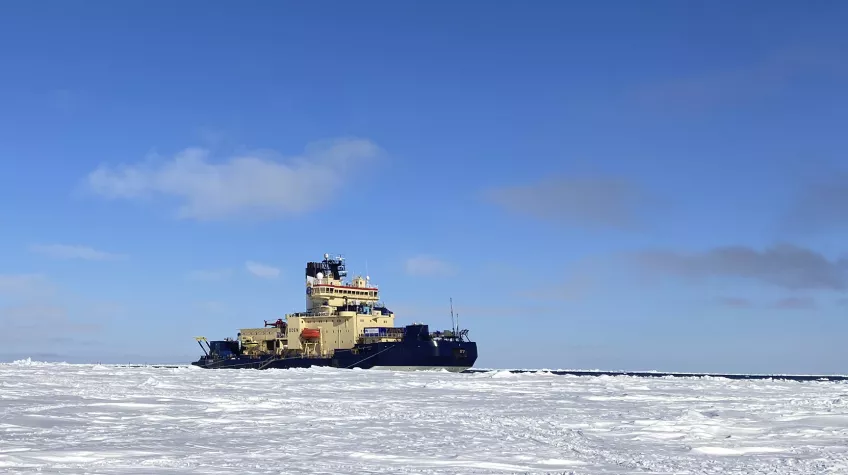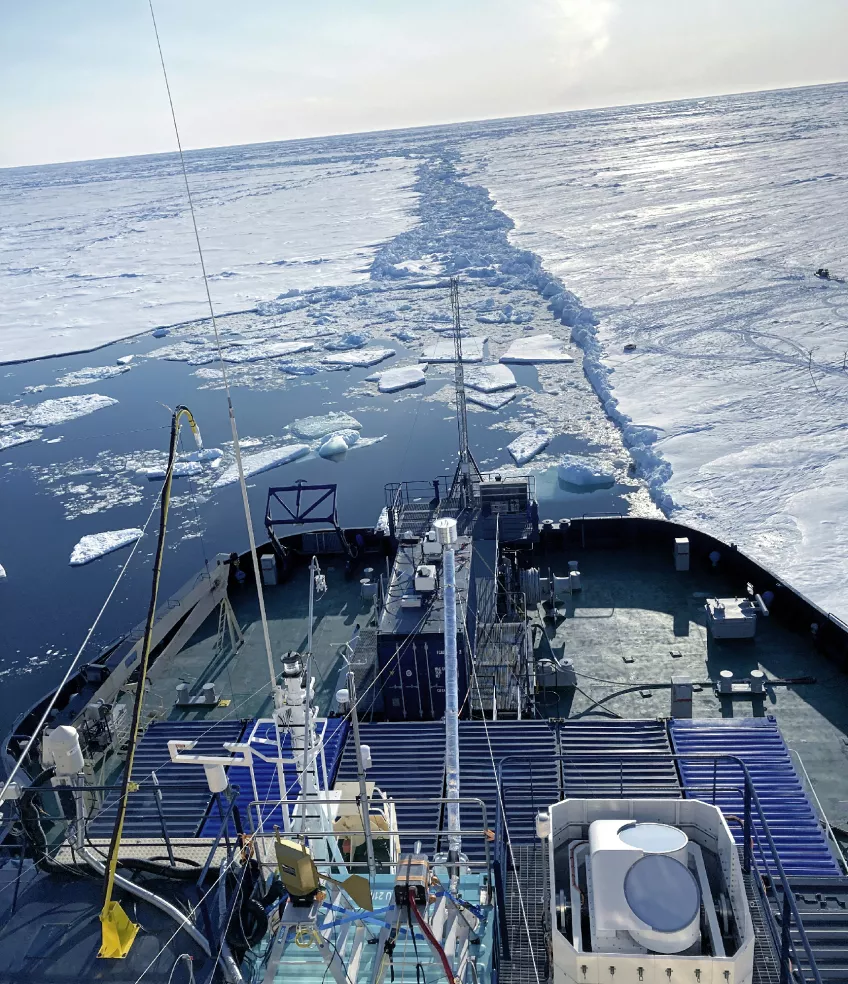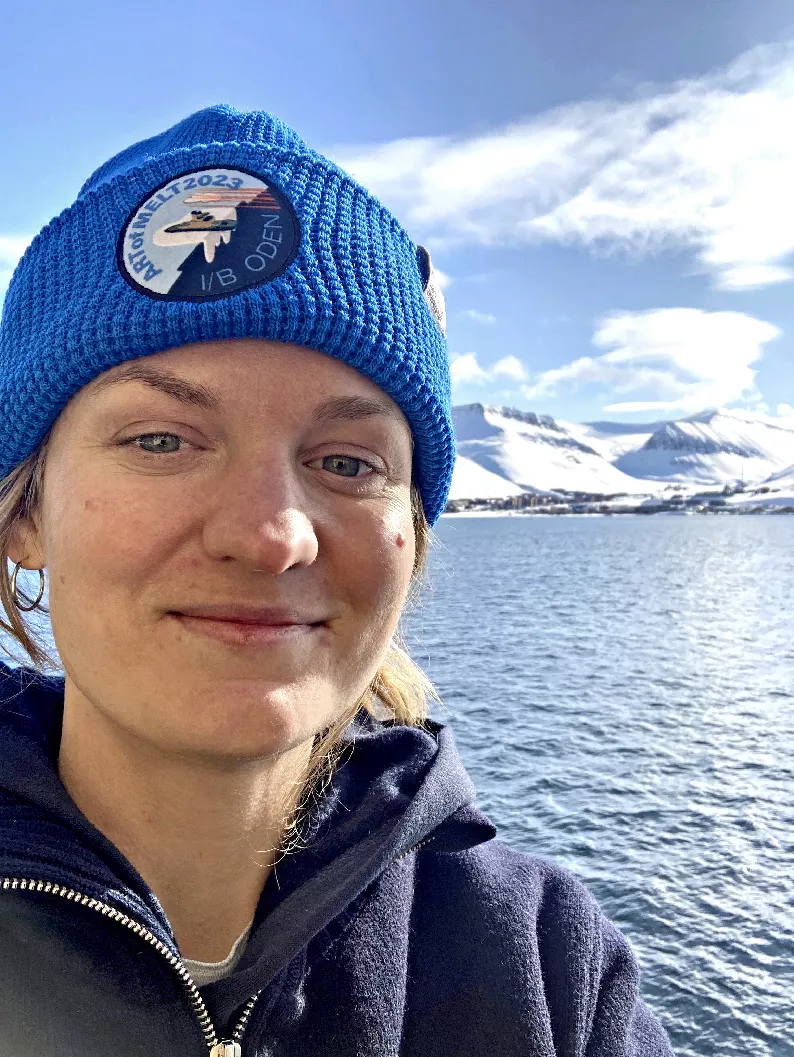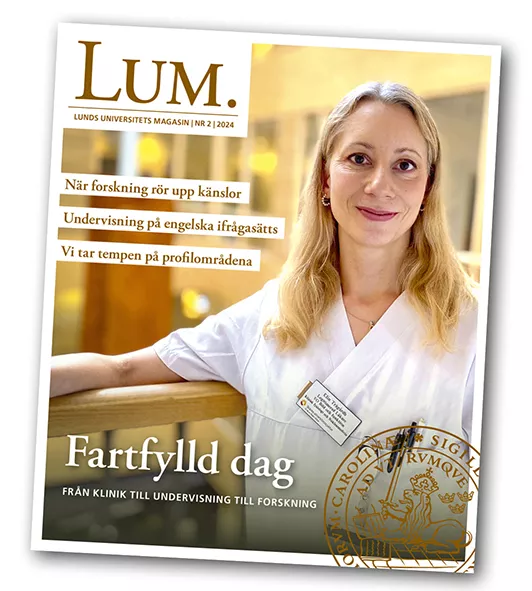For six weeks, the spaces onboard Oden were Lovisa Nilsson’s whole world. A micro-society with the same functions and infrastructure as at home – just on a ship.
The crew numbered around 70, 40 of whom were doctoral students and researchers involved in projects concerning climate change in the Arctic.
Collected data on soot
Lovisa Nilsson, doctoral student in combustion physics at the Faculty of Engineering (LTH), gathered data about soot particles in the arctic climate. The Arctic has few sources of pollution, but polluted air that moves to the Arctic from other parts of the world increases the amount of soot particles that affect the melting process.
“Soot has a warming effect on the climate, both in the atmosphere and through the particles that fall to the ground. Soot on snow and ice in the Arctic makes the ground blacker and more likely to absorb sunshine, which means that the ice melts more quickly.”
During the expedition, certain measurements were done onboard the ship, while others required the researchers to venture onto the ice to collect the data. Leaving the icebreaker was risky and required planning and for safety precautions to be taken. Polar bears were constantly present around the ship and working close to them was risking one’s life.
“This year’s expedition broke the record for the number of polar bears.” Some of them hung around very close to the ship, at times less than ten metres away from us.
Lovisa Nilsson explains that the icebreaker’s doctors and nurses were among those who assisted the researchers on the ice as polar bear guards. They looked for polar bears from the bridge, and when the bears came too close, they fired a starting gun and the boat sounded its horn. Everyone on the ice had to return to the ship.
“Every now and then, the polar bears did hinder our efforts. They chewed the seats off our snow scooters and they broke some measuring equipment. But we didn’t have any incidents in which people were injured.
During the expedition, it was not all research work. Just as in everyday life back at home, days on board the icebreaker were filled with other activities besides work-related ones.
“Living on the icebreaker was surprisingly straightforward. The cooks served food according to a schedule, and when we had free time we watched films in the mini cinema, which has room for a twenty or so people, went in the sauna and played table tennis.”
Difficult to navigate
During this year’s expedition, the icebreaker travelled further north than ever before. The ice was very thick in places, and even if the ship was at a standstill, it could drift several kilometres with the ice sheets.
Now the expedition’s researchers have returned home to begin the work of collating and analysing all the data. Their results about how the Arctic climate is changing will be published next year.
Photo: Lovisa Nilsson & Julia Asplund


